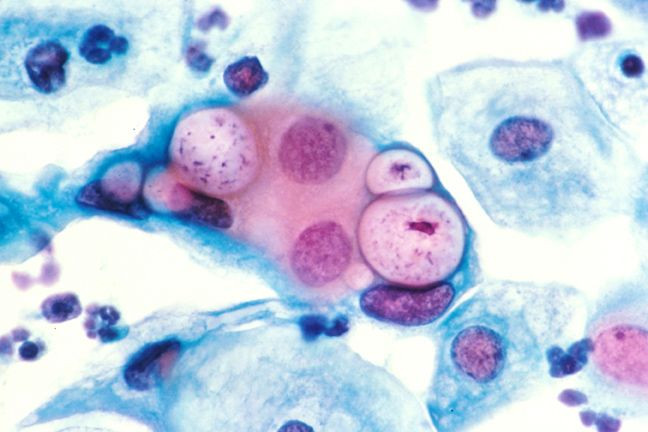Chlamydia Vaccine In Development Proves Highly Effective In Mice; Humans Could Be Next

The long road toward developing a chlamydia vaccine has had its first bricks laid, according to a new study published in the journal Vaccine.
Canadian researchers combined three individual proteins found in the bacterial species known to cause most cases of chlamydia, Chlamydia trachomatis, into one fused protein, BD584, in hopes that the new protein, or antigen, would trigger a sustained immune response to the germ when introduced to the body. They then gave laboratory mice BD584 via a nasal spray and infected them with a closely related species of C. trachomatis. Not only did the immunized mice clear the infection faster than mice not given the antigen, they also experienced symptoms like bacterial shedding from the vagina and fluid blockage of the fallopian tubes far less often.
Early as these findings are, the researchers were highly encouraged by what they could mean for the future of chlamydia treatment. A potential chlamydia vaccine would come fresh on the heels of advances in the development of other vaccines for sexually transmitted diseases like HIV and genital herpes, to say nothing of the early success seen with the HPV vaccine already available.
"Vaccine development efforts (for chlamydia) in the past three decades have been unproductive and there is no vaccine approved for use in humans," said lead author Dr. David Bulir, a researcher at the M. G. DeGroote Institute for Infectious Disease Research at McMaster University, in a statement. "Vaccination would be the best way to way to prevent a chlamydia infection, and this study has identified important new antigens which could be used as part of a vaccine to prevent or eliminate the damaging reproductive consequences of untreated infections."
Though chlamydia is currently the most reported sexually transmitted disease in the United States, most cases go undetected because it causes few noticeable symptoms, according to the Centers for Disease Control and Prevention. The minority who do become sick may suffer an abnormal vaginal discharge, a burning sensation while urinating, and genital pain. Even when seemingly harmless, chlamydia can still cause severe complications in pregnant women and reproductive problems like infertility if left untreated. It’s estimated 2.86 million new infections happen every year in the United States.
Part of the problem in developing a vaccine against C. trachomatis is that there are many related strains of the bacteria that evolve fairly often — a common stumbling block in creating a foolproof vaccine for diseases like the flu and HIV. And these strains can cause different varieties of disease. One in particular, trachoma, happens when certain strains infect a person’s eye, and is the leading cause of preventable blindness worldwide, with the World Health Organization estimating that 6 million have been blinded by the disease.
Bulir and his colleagues hope their combination strategy might be able to provide protection against multiple strains, including those that cause trachoma, since the proteins used in the vaccine are essential to helping the bacteria infect and grow inside its host. The ease of delivering the drug to future patients is also another positive.
"The vaccine would be administered through the nose,” explained study author and PhD student at McMaster University Steven Liang. “This is easy and painless and does not require highly trained health professionals to administer, and that makes it an inexpensive solution for developing nations," he said.
For the time being, though, the experimental vaccine still needs to be put through its paces, with the researchers aiming to test their creation up against various chlamydia strains in the near future.
Source: Bulir D, Liang S, Lee A, et al. Immunization With Chlamydial Type III Secretion Antigens Reduces Vaginal Shedding and Prevents Fallopian Tube Pathology Following Live C. muridarum Challenge. Vaccine. 2016.



























